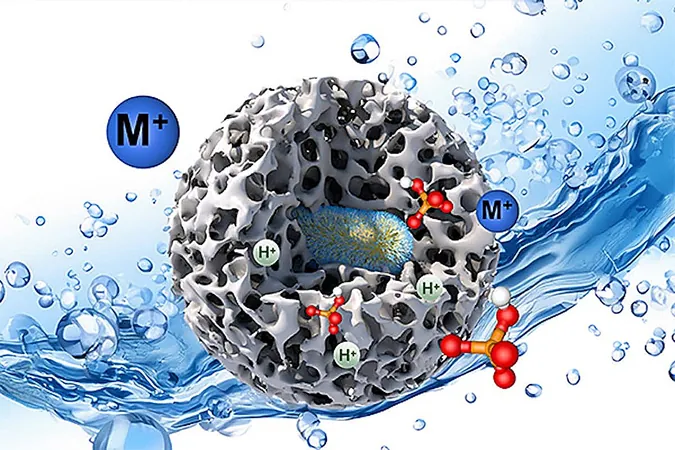
Unlocking the Secrets of Nanopores: The Key to Revolutionary Desalination and Carbon Capture
2025-05-12
Author: Rajesh
A Breakthrough in Nanopore Chemistry!
Tiny nanopores may hold the secret to major advancements in desalination, carbon dioxide storage, and efficient porous catalysts. Researchers at the McKelvey School of Engineering, Washington University in St. Louis, have pioneered a method to precisely manage contaminants within these minuscule spaces, which could transform water treatment and industrial processes.
The Power of Chemical Functional Groups
The research team, led by chemical engineering experts Young-Shin Jun and Srikanth Singamaneni, delved deep into how different chemical functional groups can influence ion concentrations and pH levels inside nanopores. Their findings, published in the prestigious journal ACS Applied Materials & Interfaces, highlight how vital these interactions are for several applications.
Measuring the Unmeasurable: A Nanosensor Revolution
To achieve this, the team developed a groundbreaking plasmonic nanosensor that accurately gauges the concentrations of protons and various contaminants in nanopores. This innovative technology sheds light on the critical dynamics within these tiny spaces, allowing researchers to selectively control specific contaminants as never before.
New Insights into Ion Concentrations
In a surprising twist, their research revealed stark differences in ion concentrations between nanopores and bulk solutions. In pristine, hydrophobic nanopores, the anion concentrations surged while cation levels plummeted. Conversely, in hydrophilic nanopores, the presence and strength of functional groups significantly impacted pH levels and heavy metal concentrations.
A Universal Approach to Nanoporous Material Understanding
Singamaneni emphasized the broad implications of their work: "Integrating functionalized porous materials with plasmonic nanosensors provides a powerful framework for exploring the unique properties of nanoporous materials." This methodology offers a versatile pathway for future innovations in various porous materials.
Towards a Greener Future
Jun added that insights gained from these nanopore studies could lead to the development of materials suitable for large-scale applications. "By decoding the chemistry of nanopores, we can create superior materials and better understand the reactions that unfold in these critical yet unseen environments," he stated.
Conclusion: A Hidden World Revealed
This exciting research not only enhances our understanding of nanoporous systems but also uncovers the unexpected reactions occurring within. As scientists continue to unlock the mysteries of nanopore chemistry, the potential for groundbreaking advancements in environmental and industrial applications is within reach.



 Brasil (PT)
Brasil (PT)
 Canada (EN)
Canada (EN)
 Chile (ES)
Chile (ES)
 Česko (CS)
Česko (CS)
 대한민국 (KO)
대한민국 (KO)
 España (ES)
España (ES)
 France (FR)
France (FR)
 Hong Kong (EN)
Hong Kong (EN)
 Italia (IT)
Italia (IT)
 日本 (JA)
日本 (JA)
 Magyarország (HU)
Magyarország (HU)
 Norge (NO)
Norge (NO)
 Polska (PL)
Polska (PL)
 Schweiz (DE)
Schweiz (DE)
 Singapore (EN)
Singapore (EN)
 Sverige (SV)
Sverige (SV)
 Suomi (FI)
Suomi (FI)
 Türkiye (TR)
Türkiye (TR)
 الإمارات العربية المتحدة (AR)
الإمارات العربية المتحدة (AR)